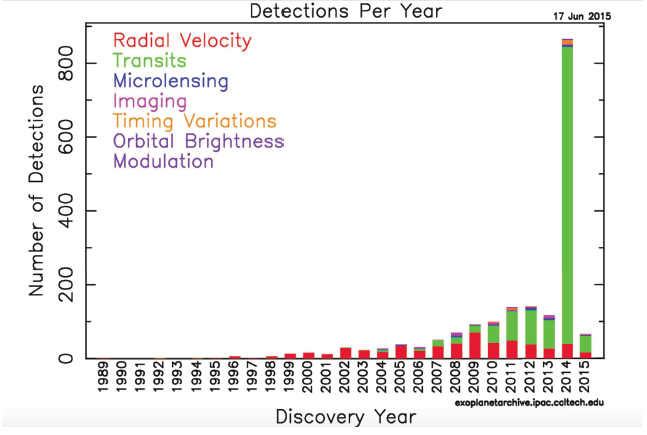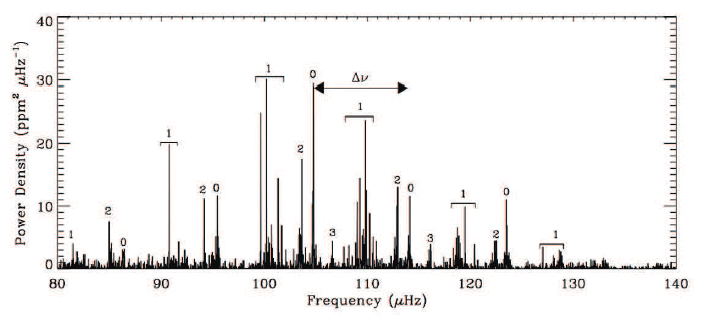(只提供英文版)
Thirty years ago, William Borucki and Audrey Summers published a paper assessing the potential for detecting extrasolar planetary systems by transit photometry. The key concept is to simultaneously monitor the brightness of a large number of stars with a high-precision photometer. Planets are revealed by the dips in brightness they produce when they pass in front of (transit) their host stars. Successive transits by a planet are spaced by its orbit period, which helps to distinguish transits from other sources of stellar variability. Transit depths determine the ratio of the planet’s surface area to that of its host star. Borucki and Summers emphasized that detection of Earth-size planets would require observations from above the atmosphere.
Subsequently, Borucki began a long quest to develop a suitable photometer and to convince the astronomical community and the US National Space and Aeronautics Administration (NASA) that a modest space mission could discover planets potentially capable of harbouring life. Four proposals submitted between 1992 and 1998 were rejected before the fifth was selected in December 2001 as Discovery Mission #10. Mission development began in 2002 and launch occurred in March 2009.
Five years after launch, the Kepler mission has detected over four thousand planet candidates and confirmed more than one thousand. Analysis of these data shows that most stars have planets and that small Earth-size planets are common.
An important milestone in gaining acceptance for the Kepler mission was the demonstration that photometry from space would be precise enough to detect Earth-size planets transiting Sun-size stars. Since Earth’s radius is about one hundredth of Sun’s radius, this requires measuring brightness variations smaller than one part in ten thousand. Kepler routinely achieves higher precision and as a result has discovered planets even smaller than Earth.
Kepler also accomplished an important secondary goal, the precise measurement of photometric variations due to stellar oscillations. Determination of oscillation frequencies informs us about stellar ages, masses, radii, and internal rotation rates.

Fig 1: Transit geometry of Kepler 10b, the first rocky planet Kepler discovered. Planet parameters: P = 0.84 d, Mp ≈ 4.6M⊕, R ≈ 1.4R⊕. The gravitational acceleration on the surface of this planet is similar to that on Earth but the temperature is much too high for liquid water to exist.

Fig 2: Pace of Exoplanet Discoveries. Early discoveries made by radial velocities measured from the ground mainly found giant planets. Transits detected from space discovered planets with a wide range of sizes, including some even smaller than Earth. To a considerable extent, the peak rate of discovery in 2014 is due to the introduction of a statistical method that validates large groups of candidates identified in previous years.

Fig 3: Asteroseismology Spectrum of HD 186355 (Modeling Kepler Observations of Solar-like Oscillations in the Red Giant Star HD186355. C Jiang et al. 2011, ApJ, 742, 120, 2011): The discrete peaks at particular frequencies are akin to the individual notes a piano can play. Knowledge of these frequencies provides information about the interior of the star that otherwise is hidden from our view.
24 September 2015 Hong Kong
